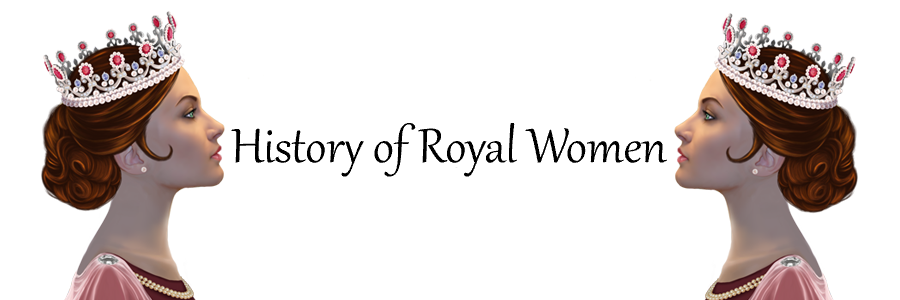
Princess Wen Jiang (also known as Princess Jiang Shi) was known as one of China’s most debased princesses.[1] She has often been depicted as “lascivious and reckless.”[2] Her incestuous affair with her brother, Duke Xiang of Qi, was said to have caused “disorder, which led to misfortune and disaster.”[3] Yet, Princess Wen Jiang was said to be a talented politician who helped maintain peace between the two States of Qi and Lu.[4]
Princess Wen Jiang was born during the Spring and Autumn period, which lasted from 771 to 453 B.C.E.[5] During this period, Chinese states were declaring their own independence from the ruling Zhou Dynasty to form their own dynasties.[6] Her first name, Wen, means “Cultured.”[7] She was a Princess of the State of Qi.[8] Her father was Duke Xi of Qi, who reigned from 730-698 B.C.E.[9] She had two known elder brothers named Prince Lu Zu’er (the future Duke Xiang of Qi from 697-686 B.C.E.) and Prince Xiaobai (who would become the future Duke Huan of Qi from 685-643 B.C.E.).[10]
Duke Xi of Qi tried to marry Princess Wen Jiang to the Crown Prince of the State of Zheng (in modern-day Henan Province).[11] This was because the State of Zheng helped the State of Qi several times.[12] However, the State of Zheng refused the marriage alliance.[13] Duke Xi of Qi eventually married Princess Wen Jiang to Duke Huan of the State of Lu (modern-day Shandong Province).[14] Thus, Princess Wen Jiang became a Duchess.[15] Three years after her marriage, Duchess Wen Jiang gave birth to a son named Tong (who would become the future Duke Zhuang of Lu from 693-662 B.C.E.).[16] She also had another son named Qingfu. Duchess Wen Jiang was said to be very powerful.[17] She travelled to other states with her husband.[18] She was often referred to as “our Minor Ruler.”[19]
In 694 B.C.E., Duchess Wen Jiang accompanied her husband, Duke Huan of Lu, back to her native homeland of the State of Qi.[20] Her brother, Lu Zu’er, was the reigning Duke Xiang of Qi. Duchess Wen Jiang then began an affair with her brother, Duke Xiang of Qi.[21] Some accounts claim that Duchess Wen Jiang had an affair with her brother before she married Duke Huan of Lu.[22] Duke Huan of Lu quickly learned of his wife’s incestuous affair.[23] Duke Xiang of Qi then held a banquet and got him drunk.[24] He ordered Prince Pengsheng to kill him.[25] Some accounts claim Prince Pengsheng was Duke Xiang’s son.[26] Others claim he was Duke Xiang’s half-brother.[27] After the assassination of Duke Huan of Lu, Duchess Wen Jiang’s son, Prince Tong, was quickly enthroned as Duke Zhuang of Lu.[28]
Duchess Wen Jiang’s whereabouts are unclear after Duke Huan of Lu’s assassination.[29] Some accounts claim that Duchess Wen Jiang remained in the State of Qi for the remainder of her life.[30] Some claim that she returned to the State of Lu with her husband’s body.[31] One source claims that her son, Duke Zhuang of Lu, built a residence for her at the Lu-Qi border.[32] Despite her whereabouts, Duchess Wen Jiang still wielded immense political power.[33] She reigned the State of Lu alongside her son and visited other states until her death in 673 B.C.E.[34] Through her efforts, she helped maintain peace between the two states, Qi and Lu.[35]
Princess Wen Jiang was infamous because of her affair with her brother, Duke Xiang of Qi.[36] It is unclear if she was responsible for the death of her husband, Duke Huan of Lu.[37] Nevertheless, she was very influential in both the reigns of her husband and son.[38] She was respected during her life and was often referred to as a “Minor Ruler.”[39] Through her efforts, she managed to foster peace between the States of Qi and Lu.[40] While she was not virtuous, Princess Wen Jiang managed to prove herself a skilled and competent politician.[41]
Sources:
Cook, C. A. (2015). “Wen Jiang, Wife of Duke Huan of Lu”. Biographical Dictionary of Chinese Women: Antiquity Through Sui, 1600 B.C.E. – 618 C.E. (L. X. H. Lee, Ed.; A. D. Stefanowska, Ed.; S. Wiles, Ed.). NY: Routledge. pp. 80-81.
Eno, R. (2010). 1.7. Spring and Autumn China (771-453). Indiana University, PDF.
Liu, X., Kinney, A. B. (2014). Exemplary Women of Early China: The Lienü Zhuan of Liu Xiang. United Kingdom: Columbia University Press.
[1] Liu & Kinney, 2014
[2] Liu & Kinney, 2014, p. 141
[3] Liu & Kinney, 2014, p. 141
[4] Cook, 2015
[5] Eno, 2010
[6] Eno, 2010
[7] Liu & Kinney, 2014, p. 263
[8] Cook, 2015
[9] Liu & Kinney, 2014
[10] Liu & Kinney, 2014
[11] Cook, 2015
[12] Cook, 2015
[13] Cook, 2015
[14] Cook, 2015
[15] Cook, 2015
[16] Cook, 2015
[17] Cook, 2015
[18] Cook, 2015
[19] Cook, 2015, p. 81
[20] Cook, 2015
[21] Cook, 2015
[22] Cook, 2015
[23] Liu & Kinney, 2014
[24] Liu & Kinney, 2014
[25] Liu & Kinney, 2014
[26] Cook, 2015
[27] Cook, 2015
[28] Cook, 2015
[29] Cook, 2015
[30] Cook, 2015
[31] Cook, 2015
[32] Cook, 2015
[33] Cook, 2015
[34] Cook, 2015
[35] Cook, 2015
[36] Liu & Kinney, 2014
[37] Liu & Kinney, 2014
[38] Cook, 2015
[39] Cook, 2015, p. 81
[40] Cook, 2015
[41] Cook, 2015

Be the first to comment